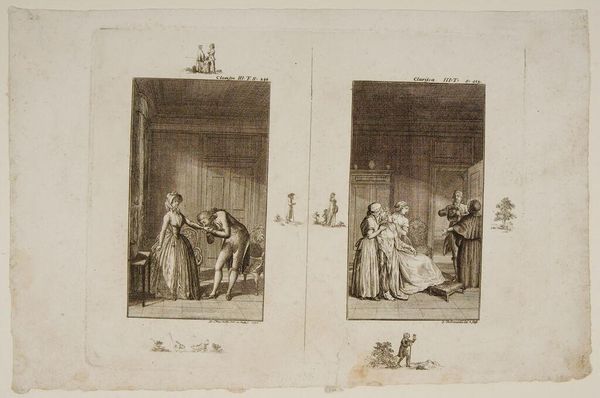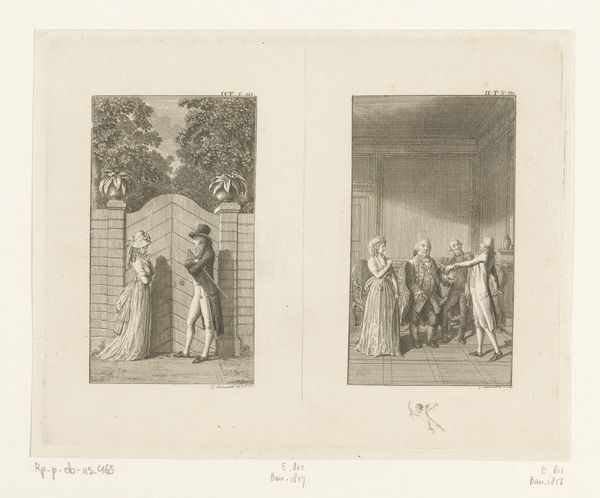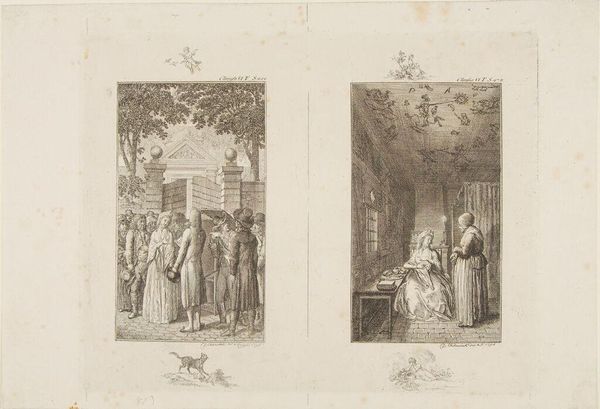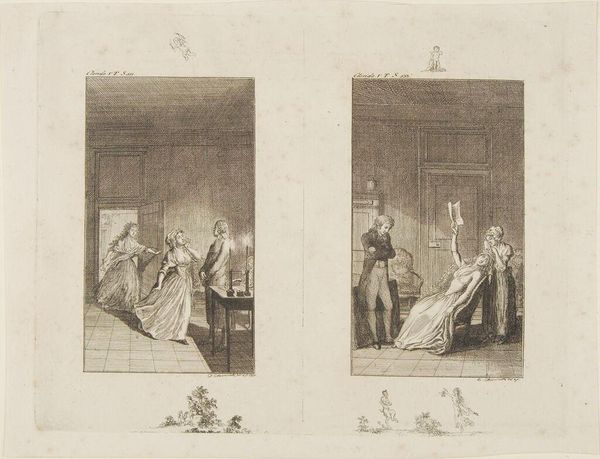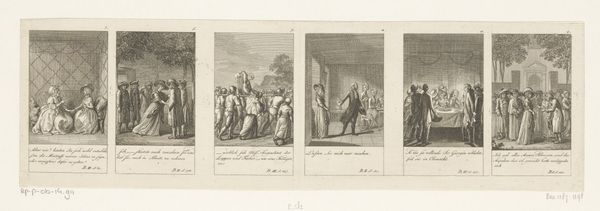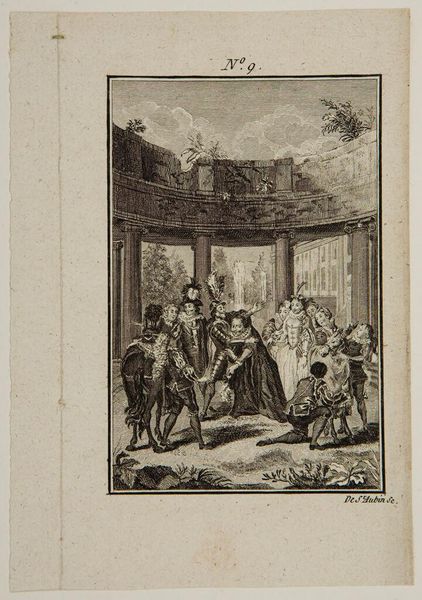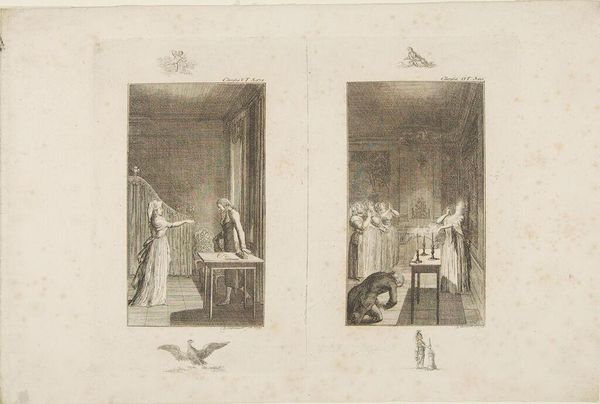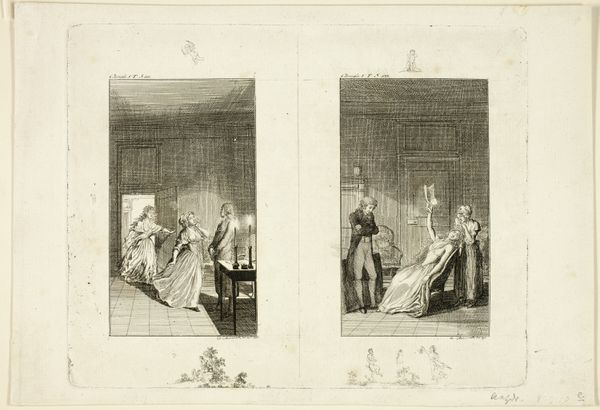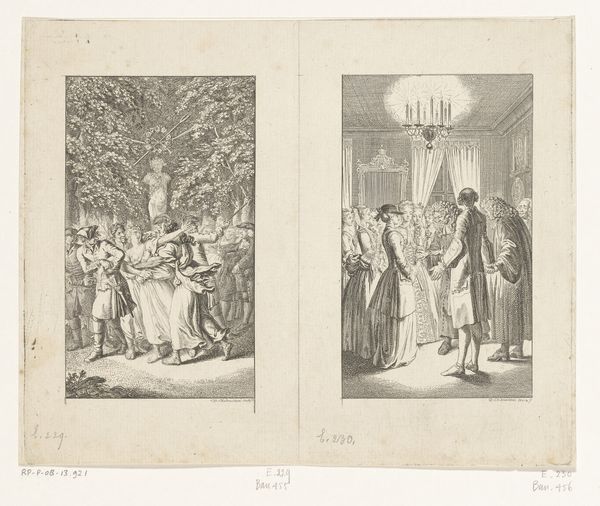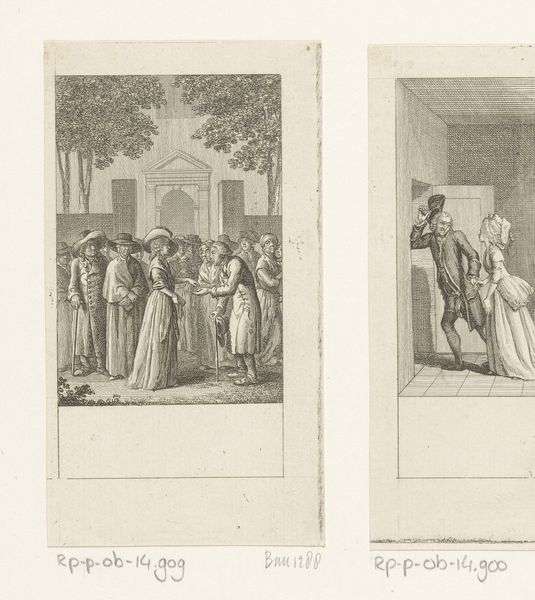
Dimensions: Image (Left): 12 Ã 6.6 cm (4 3/4 Ã 2 5/8 in.) Image (Right): 12 Ã 6.6 cm (4 3/4 Ã 2 5/8 in.) Plate: 16.9 Ã 21.2 cm (6 5/8 Ã 8 3/8 in.) Sheet: 19 Ã 29 cm (7 1/2 Ã 11 7/16 in.)
Copyright: CC0 1.0
Curator: This is Daniel Nikolaus Chodowiecki's "Two Scenes from 'Clarissa'," a print now held at the Harvard Art Museums. Chodowiecki, active in the late 18th century, was known for illustrating popular novels. Editor: Immediately, I notice the stark contrast between the outdoor and indoor scenes, and the palpable tension. The body language in both vignettes speaks volumes. Curator: Absolutely. The scenes depict moments from Samuel Richardson's novel "Clarissa," a tragic tale exploring themes of virtue, seduction, and societal constraints. The composition reflects the novel’s sentimentalism. Editor: Given the narrative focus, it feels crucial to examine how gender and class intersect in these depictions. Clarissa's vulnerability is almost physically represented in the composition. Curator: The print medium itself is significant. Chodowiecki’s prints were widely circulated, making complex narratives like "Clarissa" accessible to a broad audience, shaping social and moral discourse. Editor: I agree. Analyzing how such images shaped public opinion is vital. It urges us to consider how visual culture, then and now, perpetuates or challenges power structures. Curator: Indeed. Chodowiecki's artistry provides a window into the social values and anxieties of the Enlightenment. Editor: It serves as a reminder of the critical role art plays in reflecting, and influencing, societal norms.
Comments
No comments
Be the first to comment and join the conversation on the ultimate creative platform.
